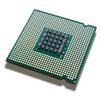This study introduces a lightweight U-Net model optimized for real-time semantic segmentation of aerial images, targeting the efficient utilization of Commercial Off-The-Shelf (COTS) embedded computing platforms. We maintain the accuracy of the U-Net on a real-world dataset while significantly reducing the model's parameters and Multiply-Accumulate (MAC) operations by a factor of 16. Our comprehensive analysis covers three hardware platforms (CPU, GPU, and FPGA) and five different toolchains (TVM, FINN, Vitis AI, TensorFlow GPU, and cuDNN), assessing each on metrics such as latency, power consumption, memory footprint, energy efficiency, and FPGA resource usage. The results highlight the trade-offs between these platforms and toolchains, with a particular focus on the practical deployment challenges in real-world applications. Our findings demonstrate that while the FPGA with Vitis AI emerges as the superior choice due to its performance, energy efficiency, and maturity, it requires specialized hardware knowledge, emphasizing the need for a balanced approach in selecting embedded computing solutions for semantic segmentation tasks
翻译:暂无翻译




